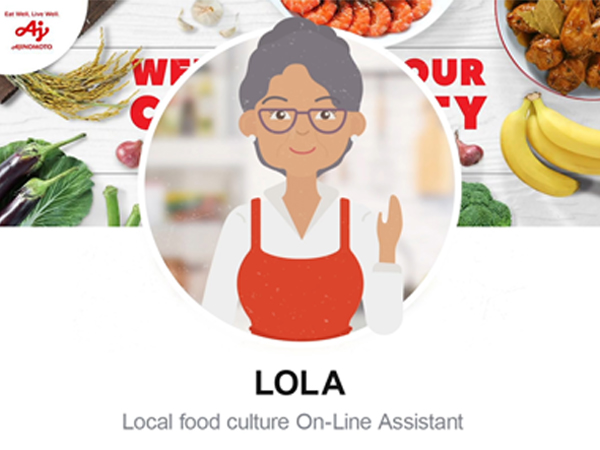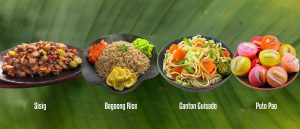
URL Copied
September 3, 2019 9:00 am

Last month, your L ocal food culture O n- L ine A ssistant or LOLA made us further appreciate our local cuisine by showcasing heritage dishes from Luzon, Visayas and Mindanao in her riddles. Just like our beloved grandparents, LOLA, which is the online database of Ajinomoto’s extensive culinary library that spans over 61 years, can provide you with the best advice and helpful tips based on wealth of experiences. Our LOLA will also offer full servings of facts about Filipino food and how to make authentic Pinoy dishes, including different techniques and kitchen hacks to guide you in replicating delicious Pinoy ulam recipes in your kitchen.
Filipino Food Influences
Filipino cuisine is considered as a melting pot in Asia due to different foreign influences that started with the pre-Hispanic era, Chinese traders, Indo-Malay visitors, Spanish colonizers, American lifestyle, up until the modern era.
How do we consider a dish to be ‘Filipino’?
Lechon has many versions all over the world, Adobo is a technique from the west, Sinigang is quite unique but varied as well, Sisig is original Filipino but would foreigners accept it? All of these are considered Filipino Food. But the question is, what makes them Filipino? What’s truly unique about Filipino in terms of food is how we cook and eat. It was our customs that made us different from others.
FILIPINO FOOD CUSTOMS & TRADITIONS

Our hospitality makes us translate “Hello!” into “Kumain ka na ba?” especially when welcoming foreign guests or relatives from abroad. You’ll get a feel of what home is when the host prepares the house specialties and you should be ready for a grand feast.
There are over a hundred fiestas in the Philippines each year, wherein the streets are filled with colorful processions while homes are abundant with food. Fiesta or “feast” in Spanish is meant to thank and honor the patron saint of a town or as a means of praying for blessings. However, it not only limited to religious festivities these days. Be it a day devoted to flowers, lechon, or duck egg, our country sure has a feast to commemorate it. Homes are not only open to your kin and friends but also to other visitors, making it a celebration where you can eat so much without any cost after visiting one house to another.
We have unusual food pairings that are quite weird for western people but a big hit for the locals. You have champorado (chocolate porridge) and tuyo (Dried Fish), dinuguan (pork blood stew) and puto (rice cake), green mango and bagoong (fermented shrimp paste), and a lot of other pairs.
We never leave any meat to waste. Chicken can be broken down into fried chicken, grilled IUD (intestine), adobong atay (chicken liver), adidas (grilled chicken feet), and many more. Pig innards also have limitless ways to be served. We have Betamax (grilled pig’s blood), isaw (intestine), sisig , and a lot more.
What is a Filipino meal without rice? Basically, it would not be considered a meal without this staple crop. Filipinos have an evident love affair with rice and enjoy it in many forms. We have the traditionally cooked white rice which is perfect for every meal, sinangag (fried rice), and lugaw (rice porridge). Others also enjoy bahaw (leftover rice) and tutong (burnt rice) which further shows that wasting food is not an option for us. We also have sticky rice varieties — suman, biko or kalamay — which can be devoured at any time of the day.
Filipino food customs and traditions make us unique and these must be passed down from LOLA’s generation to ours. See what Lola has in store for you in the next postings, her stories will surely make you think and hungry too. For more exciting content and to learn more about your favorite Pinoy ulam recipes, stay tuned with LOLA , our L ocal food C ulture O n- L ine A ssistant.
Disclaimer:
This blog contains general information about exercise, fitness, diet, nutrition and related subjects intended for general educational purposes only. The words and other content provided in this material, and in any linked or referenced materials, are not intended and should not be construed as a health, medical, fitness, diet or nutrition advice. Always consult with a licensed physician and/or health workers before beginning any exercise, fitness, diet or nutrition routine especially if the reader is pregnant or having a special medical condition. Information presented herein, are in no way intended to substitute formal and legitimate consultations with your healthcare providers.
The views expressed on this blog and website have no relation to those of any academic or organizations mentioned as reference in this article.